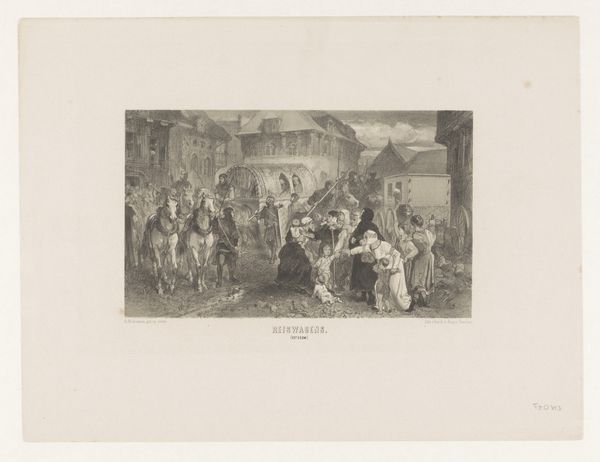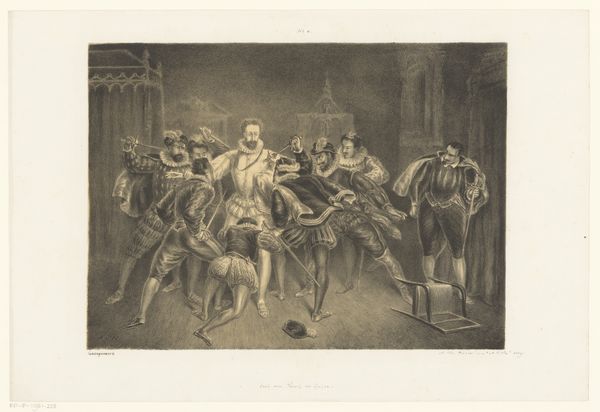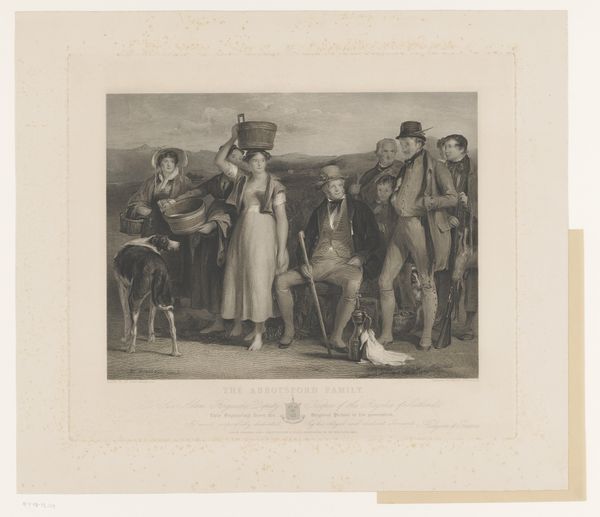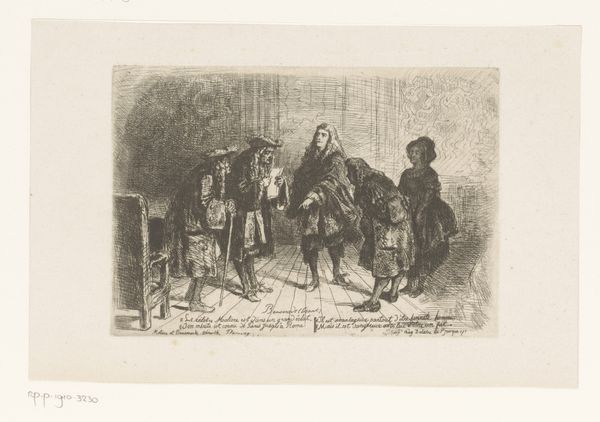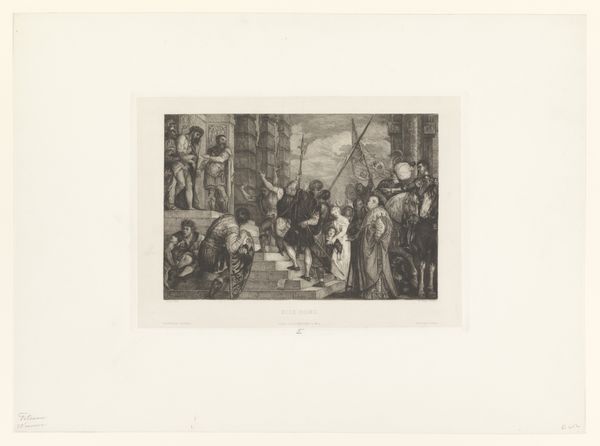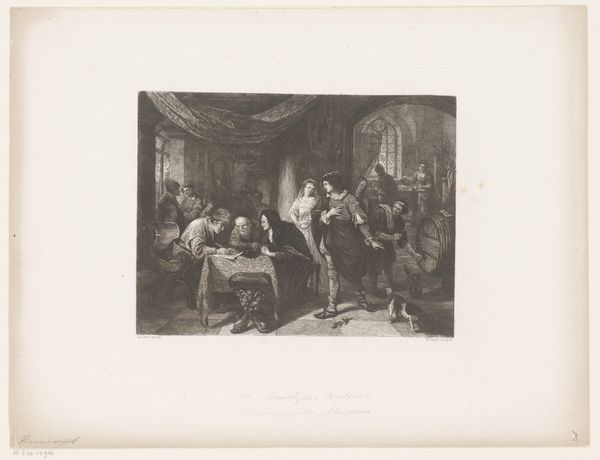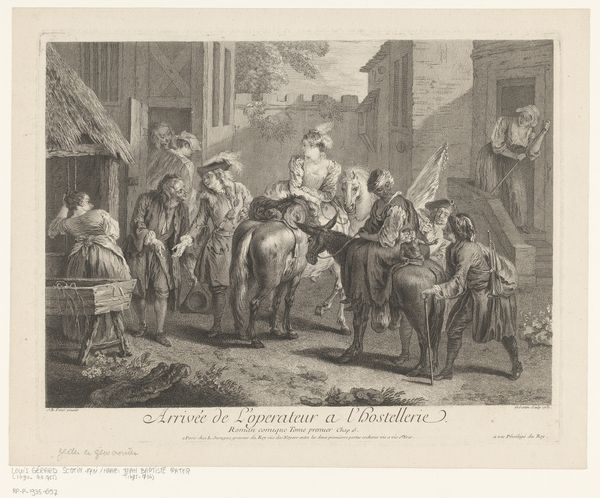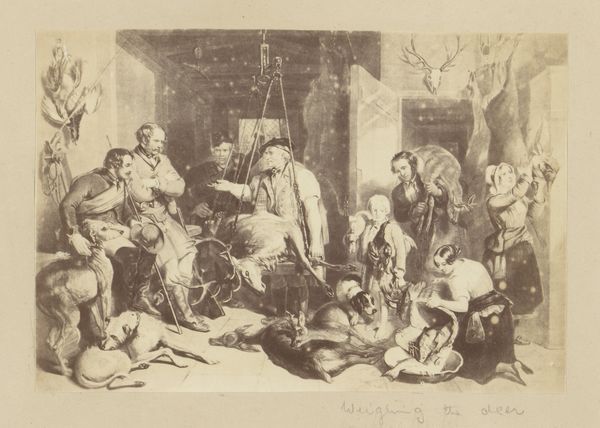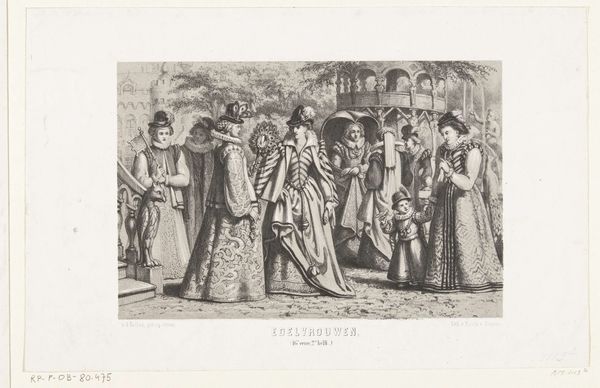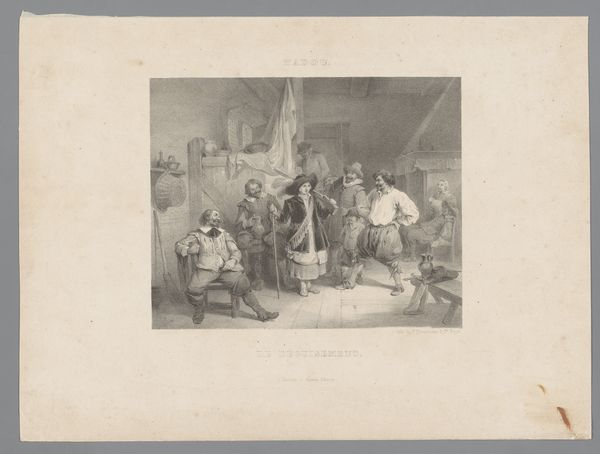
Scholing van de zonen van koning Eduard IV van Engeland na de dood van hun vader, 1483 1816 - 1886
0:00
0:00
Dimensions: height 310 mm, width 403 mm
Copyright: Rijks Museum: Open Domain
Curator: Let's take a moment to consider this engraving from the Romantic period, depicting a historical scene from the late 15th century, titled "Scholing van de zonen van koning Eduard IV van Engeland na de dood van hun vader, 1483." It's attributed to Friedrich Randel and executed sometime between 1816 and 1886. Editor: My first impression is melancholy; the stark contrast of light and shadow gives it an intense feeling of grief and foreboding. It seems to depict a pivotal moment, but a rather somber one, wouldn’t you agree? Curator: Absolutely. It’s the culmination of material anxieties surrounding legitimacy, succession and power dynamics within the royal court. You see the clear delineation in dress, indicating status. The children’s garments, rendered with a surprising amount of detail for an engraving, tell a story of privilege and yet, vulnerability. It speaks to the social conditions and material expressions of grief in that historical moment, what it meant to display power in loss. Editor: Precisely, but going further, I see it as a stark visual commentary on the patriarchal structures that dictate these children's destinies. The work invokes discourse surrounding dynastic lineage, and how children are routinely employed as mere commodities in this particular framework. Consider how the engraving utilizes conventions from medieval aesthetics while subtly subverting them through a Romantic lens, really exposing the raw political realities inherent in supposedly ordained authority. It challenges normative history-painting through attention to lived experience. Curator: Indeed. The act of engraving itself is worth noting – this method allowed for wider dissemination of this scene, democratizing access to these images. This form underscores its function as more than mere portraiture; it acted almost like visual journalism conveying historical narrative with emotive expression. I appreciate your emphasis on contemporary applications too; art provides material access to examining the very dynamics which affect identity in political and societal structures now, as well as back then. Editor: Well, looking at the long shadow cast into modernity and towards a more critically examined history and, also perhaps, the politics inherent within the framework in which we view art and historical inheritance – this has proved insightful. Curator: Agreed, this consideration regarding process coupled alongside these visual motifs prompts greater insight to historical narrative via political undertones which helps reflect the world we occupy right now. Thank you.
Comments
No comments
Be the first to comment and join the conversation on the ultimate creative platform.
